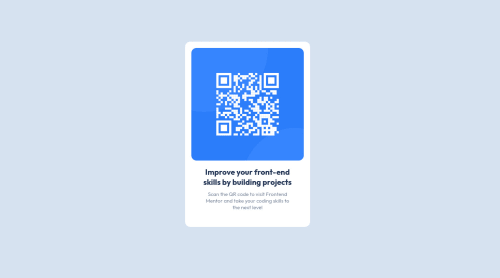QR code component 1st commit

Solution retrospective
feedbacks and advice are welcome
Please log in to post a comment
Log in with GitHubCommunity feedback
- @LarryTheFatCat
Hey!
Nice work on this challenge
Looks like you forgot box shadow, that's alright, take a look online about how to use ```box-shadow`` and try to implement into the project!
I find it odd that your card tends to smash itself into smaller and smaller pieces if the browser is resized, though I like how you used a media query to try and fix it; though it is not required since this is a very challenge!
Take a look at the HTML validation report and try to fix it other then that, great job!
Marked as helpful - Account deleted
Hey there! 👋 Here are some suggestions to help improve your code:
-
To betterspecify the main content of you site you will want to encase your entire component inside a Main Element.
-
The modern way of centering you content to your page, is by using either CSS Flex or Grid:
body { min-height: 100vh; display: grid; place-content: center; }-
The Alt Tag description for the QR image needs to be improved upon. Its needs to tell screen reader users what it is and where it will take them to when they scan it.
-
A media query is not needed for this challenge. Using responsive properties will do in making your content responsive.
-
Do not use percentages for you component's width as it will cause your component to shrink/grow indefinitely.
If you have any questions or need further clarification, let me know.
Happy Coding! 👻🎃
-
Join our Discord community
Join thousands of Frontend Mentor community members taking the challenges, sharing resources, helping each other, and chatting about all things front-end!
Join our Discord